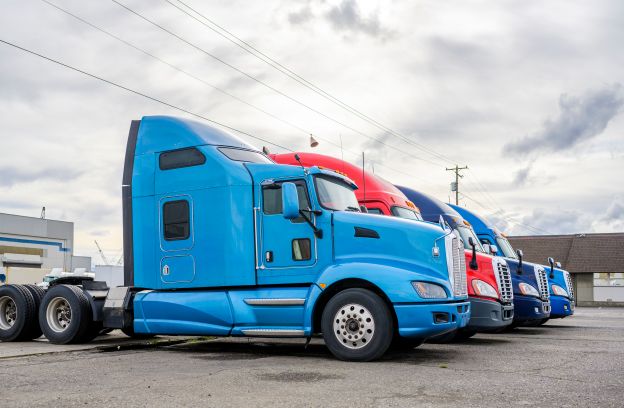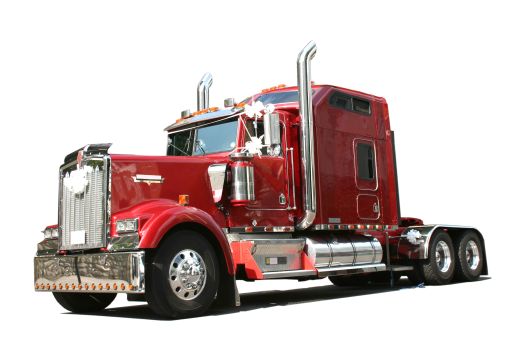 What is a Bobtail Truck?
What is a Bobtail Truck?
Truck drivers have always had a hard time keeping up with the changing technology of the industry, from electronics to computers to radios. But one item has remained constant, and that is the truck drivers themselves.
Connect with a verified mechanic in minutes. No appointments. No high fees. No waiting. Get back on the road and enjoy the ride.
A lot of drivers have always liked to be different from their colleagues and friends. Bobtail trucks are some of the most unique trucks you can find in the world, but what is a bobtail truck?
Bobtail trucks do not have trailers. By definition, bobtailing means driving a truck (semi-truck) without a trailer. Bobtails often occur when a commissioned truck driver is first dispatched from the shipping point to the pickup location. Be careful not to confuse “bobtail” with “deadheading”. This happens when a cargo truck tows an empty trailer.
The bobtail truck is a trailer truck without the bulky trailer. This may be good news for drivers. However, these trucks are designed to carry loads.
So when the tractor-trailer is in bobtail mode, the weight of the truck will change. The difference in weight means riders will have to adjust their steering and braking.
How Many Are There Types of Bobtail Trucks?
Tractor units play an important role in the economy. Move cargo and support the logistics of supplying his chain. When driving a bobtail, the articulated truck is driven on the road without a trailer attached.
Connect with a verified mechanic in minutes. No appointments. No high fees. No waiting. Get back on the road and enjoy the ride.
Drivers can pick up their luggage at the start of their shift. Or you have already unloaded your cargo and are on your way home. Bobtails should not be confused with deadheading, where a driver tows an empty trailer.
To distinguish between the two terms, consider the origin of the word. The term “bobtail” derives from trimming a horse’s tail to avoid catching hair in a horse-drawn sleigh, or because his trailerless truck resembles a breed of cat with a particularly short tail.
There are three general types of bobtail trucks:
- A tractor-trailer has a tractor unit and a trailer, and a fifth wheel coupling that connects the trailer and the tractor.
- A small to medium “small bobtail truck” has all axles connected to the same chassis. These trucks are more commonly used to transport lighter or medium loads.
- The propane-only truck delivers fuel to gas stations and auto dealerships and has a storage capacity of approximately 5,000 gallons.

Review engine, brake issues, error codes and more with a Mechanic Online in just minutes.
Ask a Mechanic Live NowIs Bobtailing Dangerous?
When it comes to driving with trucks, bobtailing has a bad reputation. A trucking bobtail occurs when a driver is en route to a shipping location to pick up a loaded trailer. Or when the driver returns to the terminal after unloading the trailer carrying the cargo.
Truck crashes have increased in the United States since 2008, according to the Department of Transportation. The proliferation of trucks on the road and the pressure on drivers during the ongoing supply chain crisis has done little to alleviate these concerns. Articulated trucks that shuttle back and forth between deliveries add to the list of potential hazards on the road.
Bobtails are dangerous because trucks are designed to carry heavy loads. These trucks are expected to carry cargo most of the time, so most of the braking power is on the rear axle under the trailer.
So when the truck bobtails, the weight is on the front wheels. The front wheels are designed with more emphasis on steering than braking. Less weight on the rear axle reduces braking performance.
In addition, drivers are trained in handling trucks with attached trailers. Bobtails are less common, so less attention may have been paid to rider preparation. However, this is a more difficult mode to drive the truck.

Drivers also don’t like bobtails because of the dangers involved in driving trucks that are more difficult to maneuver.
In addition, when Bobtail drives his truck, it costs the driver fuel, but no income from carrying the load. To make matters worse, semi-trailers often face very bumpy rides when the truck has no trailer.
Are There Any Tips in Driving a Bobtail Truck?
Driving trucks is never easy, as it requires a lot of concentration, patience, and a very specific way of thinking. If you are driving a bobtail truck, then it is even harder for you.
Since bobtailing is pretty dangerous, it’s better to practice and prepare for it before getting into real-life situations. This might help you to drive a bobtail truck safely.
Ensure a space cushion around the car. Also, allow enough time and clearance for the truck to stop while bobtailing. The lighter weight means less friction, which can significantly increase the braking requirements of trucks.
Be careful on winding roads and downhills. Bobtail trucks are more likely to slip on sharp turns and corners. Changes in braking behavior can also affect downhill driving. A bobtail truck can accelerate faster than a loaded truck.
Rain, snow or ice can also create additional difficulties when the truck is in bobtail mode. These trucks are more difficult to steer and brake, making them difficult to drive safely in harsh conditions. Always check road and weather conditions before bobtailing. Also, do not drive the Bobtail Truck when you are tired. This type of driving requires more attention and can be stressful.
Finally, be aware that the vehicle is not weighted by the attached trailer, which may increase the ground clearance of the truck.
As an additional note, drivers or the fleet company they work for usually require bobtail insurance, property damage insurance and non-truck liability insurance. Bobtail insurance typically costs less than typical truck liability insurance.
Commercial Truck Insurance HQ suggests it’s “usually in the $35 to $60/month range.” The site also suggests that you might get a better deal by combining different types of insurance.
Maintaining a solid driver’s license and a high deductible can also help reduce the cost of bobtail insurance.
Some tips above can be useful for you. Make sure to drive carefully and enjoy your driving!
Max Anthony
Max is a gizmo-savvy guy, who has a tendency to get pulled into the nitty gritty details of technology and cars. He attended UT Austin, where he studied Information Science. He’s married and has three kids, one dog and a GMC truck and a Porsche 911. With a large family, he still finds time to share tips and tricks on cars, trucks and more.
Review engine, brake issues, error codes and more with a Mechanic Online in just minutes.
Ask a Mechanic Live Now


